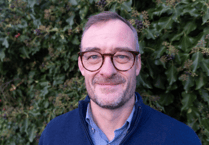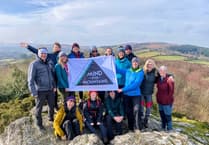A working partnership between Dartmoor National Park’s Miles Without Stiles and the South West Lakes Trust has seen some new upgrades brought to the arboretum and nature reserve at Burrator Reservoir, with more planned for the near future.
Beginning late last month, work began on upgrading the paths around the east side of the arboretum, which are now layered with fine gravel to dust, which has allowed for enhanced accessibility of the area. This work was completed with the help of volunteers for the South West Lakes Trust (who joined contractors) and have also worked to unblock culverts and widen the pathways in the vicinity by cutting back trees slightly to increase sunlight reach and, in turn, plant diversity.
Sandy Ralph has been an avid exponent of the arboretum for over 30 years, living nearby in Dousland, and as a volunteer for the South West Lakes Trust has played an instrumental role in providing vision for this upgrade work.
He said: ‘The arboretum was first planted in the late 1980s after a hurricane flattened the land. The event coincided with the privitisation of the water companies so this area had to provide land access for people for recreation purposes. They came together to build the arboretum and planted over 100 different species of trees, some of which are now quite rare like the Redwoods, one type of which we have here was identified from fossil records.
‘The paths were first laid in the late 1980s but over time they’ve eroded, so it was time to get them back up to a high standard and make them friendly for wheelchair access. We’ve had wheelchair groups come round, check it out and give us advice.
'The arobretum is definitely the jewel in the crown at Burrator and families, elderly people and dog walkers all love it as it’s such a great place to walk and enjoy. We’ve got a fantastic resource here in terms of accessibiliy, beauty, wildlife as a nature reserve with impressive habitats — we just want to improve it further.’
Tim Burton, a Dartmoor ranger based at the Burrator Discovery Centre, said: ‘We’re lacking megafauna (big animals) that would go through trees and make natural paths. If you leave a woodland, it gets dark and overgrown. It’s good to create a bit of disturbance to mimic the actions of such animals, also clearing and widening paths, ensuring a diversity of vegetation structures.
‘In this first phase of redevelopment, in addition to the new gravel, we cleared a fair number of trees. It was very dark, both in woodland and on the paths as many trees were hanging over and little light could get in. Now, more plants can grow along the path edges such as wildflowers like bluebells.
‘A lot of this work has been done with the help of our dedicated volunteers, who we’re very grateful to for all their hard work. There’s plenty left to do here but we’re cracking on with it.’
The remaining and upcoming works will see the reduction of much of the Sitka Spruce throughout the arboretum and the installation of interpretation showing the wealth of plant and animal species that can be found in the area, with work on both having already begun.
Sandy said: ‘We’ve already started labelling some of the different tree and plant species. We want to identify all of them and put their names on show with any important information for educational purposes. This will be great for the school groups who visit and enjoy learning about the area.
‘We plan to put other forms of interpretation up throughout this space. We already have lots of information collected and we’re in the process of transferring it onto on signage and big boards. We’ve started with priority species and habitats that we have here such as wet woodland, which includes trees like Willow, Birch and Elder.
‘Our focus in phase two is more woodland management to increase biodiversity and the number of habitats. Throughout the arboretum, there will be continued thinning of connifers for sunlight to stream through.Conifers self-seed everywhere, Willows take over and there’s some good specimen trees being crowded out which need the space to grow. This will complement some of the old fruit trees that have recently been planted, like apple trees, which used to be indiginous here. They provide blossoms for insects fruit for birds to feed on.
‘We’re always looking at different options with the help of the biodiversity officer we have here, who also works across Dartmoor.’
The arboretum and nature reserve is open to the public and free to access. It is located in the north-eastern corner of the reservoir and also has its own car park.
Other highlights of the area include a two hour, 3.5km circular walk of the water and the discovery centre, located west of the reservoir, which features a wealth of information about Burrator’s history.




Comments
This article has no comments yet. Be the first to leave a comment.